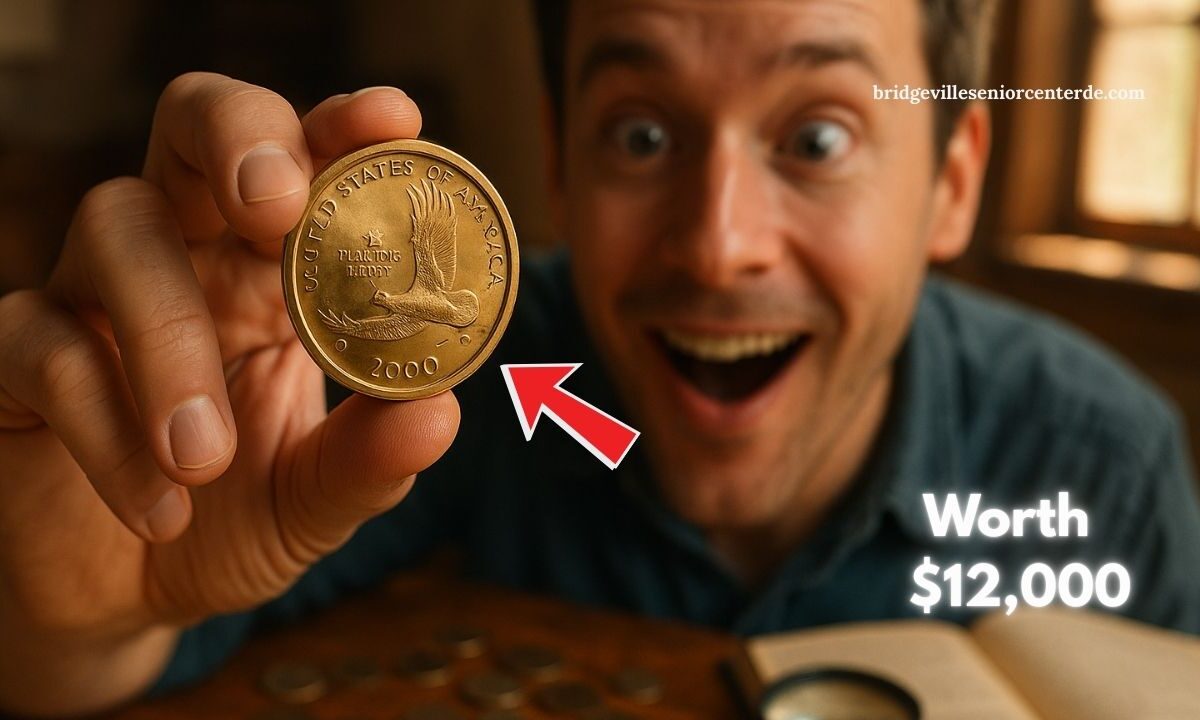Imagine rummaging through your spare change and discovering a Sacagawea dollar worth $12,000—or even more! While most of these golden coins are worth just their face value, rare varieties and minting errors can fetch astonishing sums.
Here’s how to identify the most valuable Sacagawea dollars, including the elusive $12,000 version—and why collectors are paying handsomely for them.
The Allure of Rare Sacagawea Dollars
- Standard coins: Generally worth $1 in circulation
- Cheerios Reverse errors (2000‑P): Fetch $2,000–$3,000 when crisp and uncirculated
- “Wounded Eagle” variety: Up to $5,000
- Mule error (Washington quarter obverse on dollar reverse): Sold for $88,000
- One-of-a-kind special issues: Validated coins have achieved six-figure values
Among these, the $12,000 figure most commonly refers to the rare Cheerios reverse, which recently resurfaced in the marketplace.
Why 2000-P Cheerios Variation Matters
In 2000, the U.S. Mint gave away Sacagawea dollars in Cheerios boxes—the Cheerios reverse had extra feather details on the eagle.
Only around 5,500 entered circulation, making them incredibly scarce. A pristine example recently fetched $12,000, sparking renewed excitement among collectors.
Key Valuable Varieties
| Variety | Key Trait | Approx. Value |
|---|---|---|
| Standard Circulation | Common eagle reverse | $1 |
| Cheerios Reverse (2000‑P) | Extra tail-feather detail | $2,000–$12,000 |
| Wounded Eagle (2000‑P) | Die gouge across eagle chest | Up to $5,000 |
| Mule Error (2000‑P) | Quarter obverse + dollar reverse on dollar planchet | $88,000+ |
| Proof/Satin or Specimens | Special finish or limited run | Varies widely; up to six-figures |
How to Spot a Valuable $1 Coin
- Date and Mint Mark: Focus on 2000-P coins, especially those from Cheerios promotions.
- Reverse Design: Look for sharper feather lines on the eagle tail (Cheerios reverse).
- Die Damage: Check for the “wounded eagle” die gouge across the chest.
- Obverse-Reverse Mismatch: A mule error shows George Washington’s head on one side and a Sacagawea eagle on the other.
- Condition Matters: Coins graded MS65 or better in uncirculated condition fetch far higher premiums.
For high-value coins, professional grading (e.g., PCGS or NGC) offers authentication and can significantly increase sale value.
Real Auction Highlights
- Cheerios Reverse (2000‑P, MS67): ~$12,000
- Wounded Eagle variant: up to $5,000
- Mule error (2000‑P): ~$88,000+
- Unique trial pieces & gold special types: six-figure valuations for highly rare items
What You Should Do
- Check your wallet and pocket change for 2000‑P Sacagawea dollars.
- Stay cautious—cleaning or mishandling can lower your coin’s grade.
- Compare trims: Cheerios feathers are sharper and longer than standard mint versions.
- Document and photograph any suspect coins before submitting them for review.
- Find a local coin dealer or grading service to learn more and begin valuation.
While most Sacagawea dollars are worth exactly $1, those leveraging rare Cheerios reverse designs, die errors, or mule mismatches can be extremely valuable—ranging from $2,000 to well above $12,000.
If you stumbled onto a 2000‑P example with uniquely detailed feathers, it’s worth having it authenticated. You might just strike golden treasure in your pocket change!
FAQs
Can any Sacagawea dollar be worth $12,000?
No—only selected rare varieties, notably the 2000‑P Cheerios reverse in top condition, have reached that value.
How should I preserve a potentially valuable coin?
Leave it in its original condition, avoid cleaning, and store it in a coin flip or protective holder. Consider professional grading.
What’s a mule error and why is it valuable?
A mule error is a coin with mismatched obverse and reverse designs (e.g., Washington quarter head and Sacagawea eagle). These are extremely rare and can fetch six‑figure prices.

